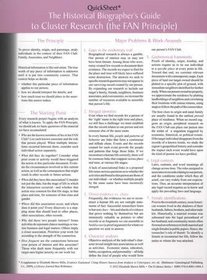Search -
The Historical Biographer's Guide to Cluster Research (The Fan Principle) (Quick Sheet)
The Historical Biographer's Guide to Cluster Research - The Fan Principle - Quick Sheet
Author:
In this QuickSheet Elizabeth Mills introduces us to the concept of "Cluster Research" based on the FAN principle, the idea being that to prove identity, origin, and parentage individuals must be studied in the context of their FAN club--family, associates, and neighbors. Historical information, she says, is like real estate: the true value of an... more »
Author:
In this QuickSheet Elizabeth Mills introduces us to the concept of "Cluster Research" based on the FAN principle, the idea being that to prove identity, origin, and parentage individuals must be studied in the context of their FAN club--family, associates, and neighbors. Historical information, she says, is like real estate: the true value of an... more »
ISBN-13: 9780806318943
ISBN-10: 0806318945
Publication Date: 1/3/2012
Pages: 4
Edition: Pmplt
Rating: ?
ISBN-10: 0806318945
Publication Date: 1/3/2012
Pages: 4
Edition: Pmplt
Rating: ?
0 stars, based on 0 rating
Publisher: Genealogical Pub Co
Book Type: Paperback
Members Wishing: 4
Reviews: Amazon | Write a Review
Book Type: Paperback
Members Wishing: 4
Reviews: Amazon | Write a Review
Genres:




